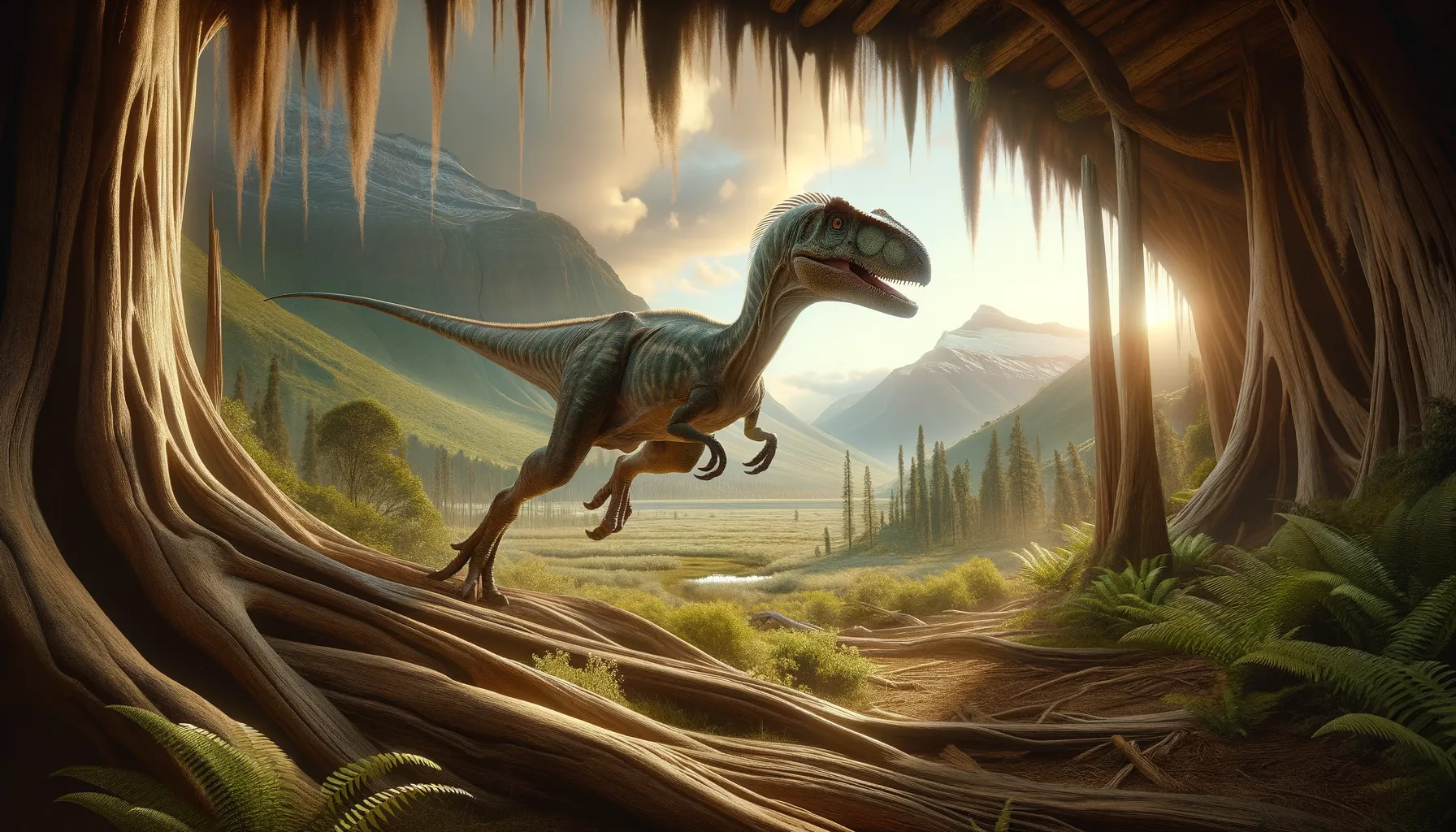
Zephyrosaurus
Swift survivor of the Cretaceous plains.
Period
Cretaceous
Length
Measured about 2 meters or 6.6 feet long.
Height
Stood about 0.6 meters or 2 feet tall.
Weight
Weighed about 13 kilograms or 30 pounds.
Zephyrosaurus was a small herbivorous dinosaur from the Cretaceous period. It is known for its light build and long legs, adapted for swift movement. This dinosaur lived in what is now North America and thrived in environments that were abundant with vegetation. Its diet primarily consisted of plants, and its size and speed likely helped it avoid predators. Despite being a lesser-known dinosaur, it adds valuable information to the understanding of small herbivorous species during this era.
Diet
Zephyrosaurus was a herbivore, meaning it primarily ate plants. It likely fed on ferns, leaves, and possibly fruits available in its forested environment. Its small size made it well-suited for foraging closer to the ground.
Hunting
As Zephyrosaurus was a plant-eater, it did not hunt for food. Instead, it foraged for vegetation, using its beak-like mouth to clip plants. It relied on its speed to evade predators rather than any hunting prowess.
Environmental challenges
Zephyrosaurus faced numerous environmental challenges, including predation from larger carnivorous dinosaurs. It lived in ecosystems prone to climate fluctuations that could affect plant growth and availability. To sustain itself, it would have needed to constantly search for food while avoiding becoming prey. Seasonal changes could also influence the food supply, requiring adaptability and resilience.
Speed
Zephyrosaurus was a fast runner, likely agile and nimble.
Lifespan
Lived for approximately 10 to 20 years.
First discovery
First discovered in Montana, USA, in the 1980s.
Fun Facts
- Zephyrosaurus is a small plant-eating dinosaur that lived during the Early Cretaceous period, about 100 million years ago.
- Its name means 'West wind lizard,' reflecting the region where its fossils were found in North America.
- Zephyrosaurus was a bipedal dinosaur, which means it walked on two legs.
- It had a long tail that likely helped it balance while running fast to escape predators.
- Zephyrosaurus is believed to have been a relatively small dinosaur, about the size of a modern-day sheep.
- This dinosaur had beak-like jaws ideal for cropping plants and leaves.
- Despite its small size, Zephyrosaurus' agile nature helped it thrive in its environment.
Growth and Development
Zephyrosaurus grew quickly after hatching, reaching maturity relatively early, possibly within a few years. Its development included the growth of longer legs, enhancing its ability to run swiftly and evade predators. This growth pattern suggests it had a high metabolism, common among smaller dinosaurs. Juveniles likely stayed in groups for protection, learning foraging skills from adults.
Habitat
Zephyrosaurus inhabited areas with abundant plant life, such as lush forests on the Cretaceous plains. Its preferred habitat would offer plenty of shrubby vegetation and leafy plants. These environments provided both food and cover, essential for avoiding predators. The climate was likely temperate, with distinct seasonal changes affecting plant growth.
Interaction with other species
Zephyrosaurus likely lived alongside a variety of other dinosaur species, including larger herbivores and carnivores. It might have formed mixed-species groups for foraging, benefiting from the presence of more vigilant or armored conspecifics. Its primary interaction, however, would have been avoiding predation by staying alert and fleeing quickly. Its keen sense of awareness helped it navigate the challenges of its ecosystem.
Natural lifespan
Zephyrosaurus had a natural lifespan ranging from 10 to 20 years.
Reproduction
Zephyrosaurus likely laid eggs in nests constructed on the ground. The parents may have guarded the nests to protect the eggs from predators. Hatchlings emerged relatively developed, capable of following adults soon after birth. Parental care might have included leading the young to feeding areas and teaching them essential survival skills.
Social behaviour
Zephyrosaurus may have exhibited herd-like tendencies, joining small groups for protection. These groups would have provided safety in numbers against predators. Its social interactions would involve communication for warning of danger and coordinating movements. While primarily focusing on foraging, social behavior also included nurturing young and cooperative vigilance.
Fossil locations
Fossils of Zephyrosaurus have primarily been found in North America, specifically in Montana, USA. The discoveries include partial skeletons that have helped paleontologists deduce its lifestyle and environmental preferences. These fossil findings have been crucial in understanding the diversity of small herbivorous dinosaurs from the Cretaceous period. Ongoing efforts may reveal more comprehensive evidence of its distribution and ecological niches.
